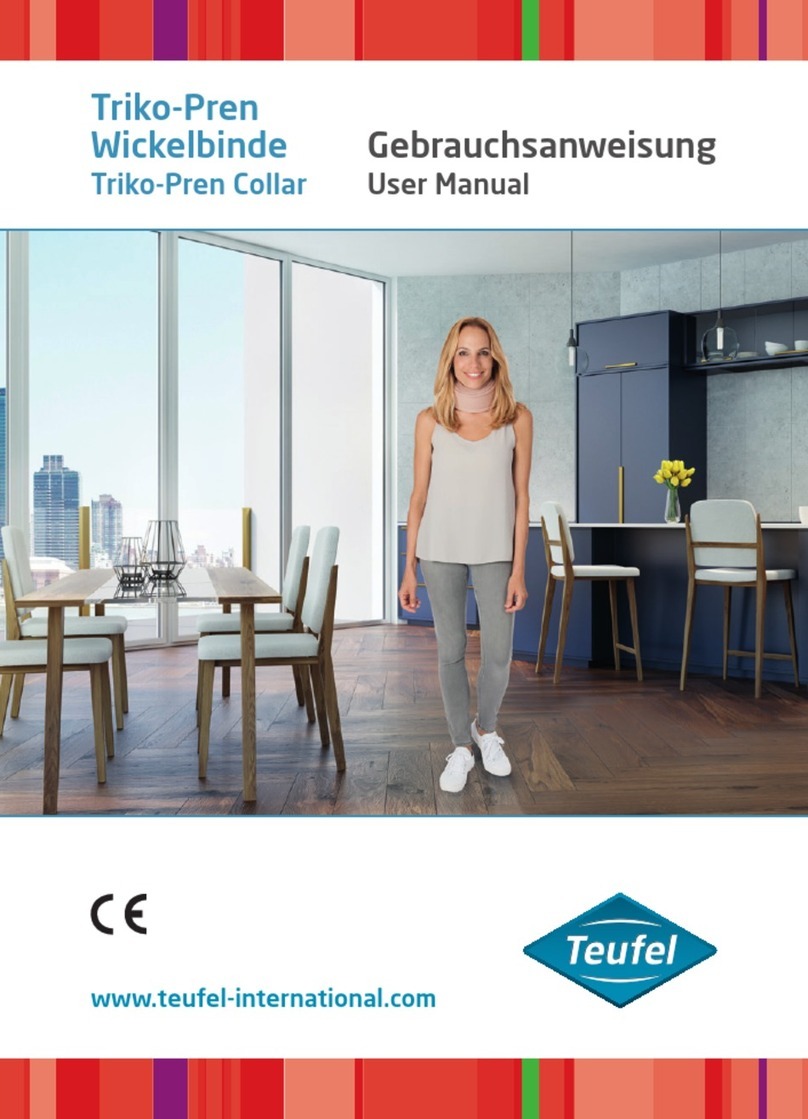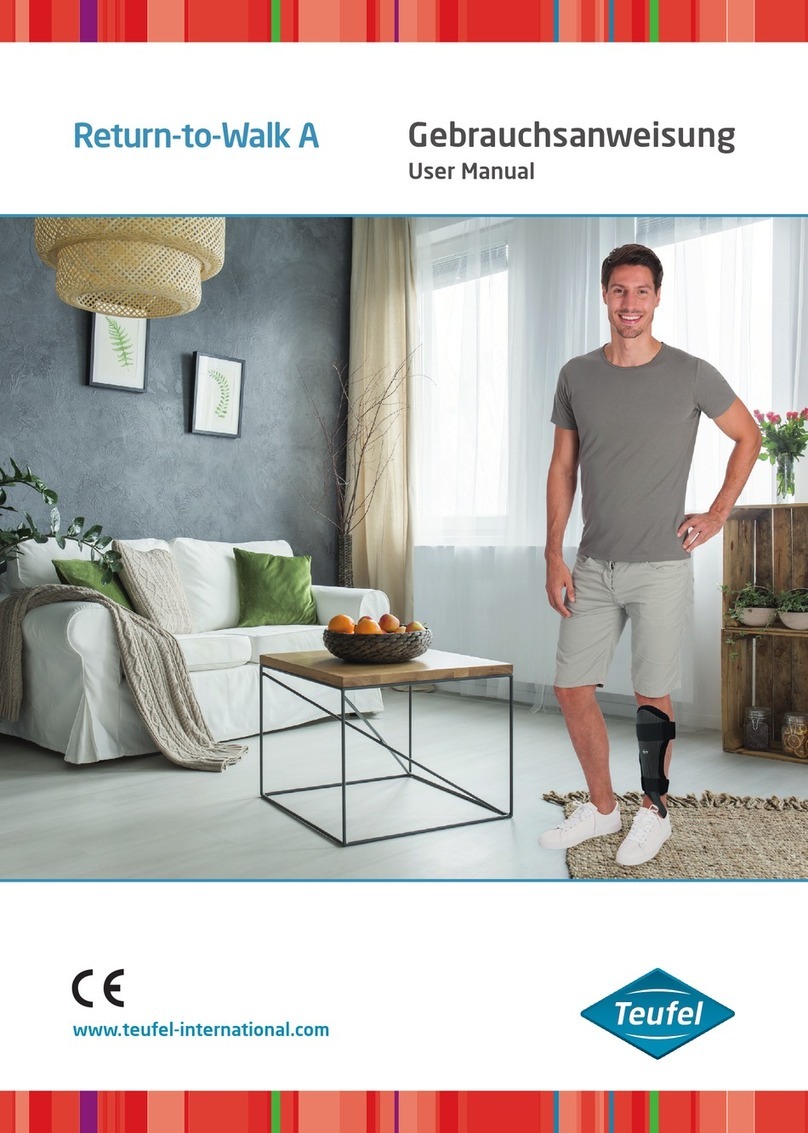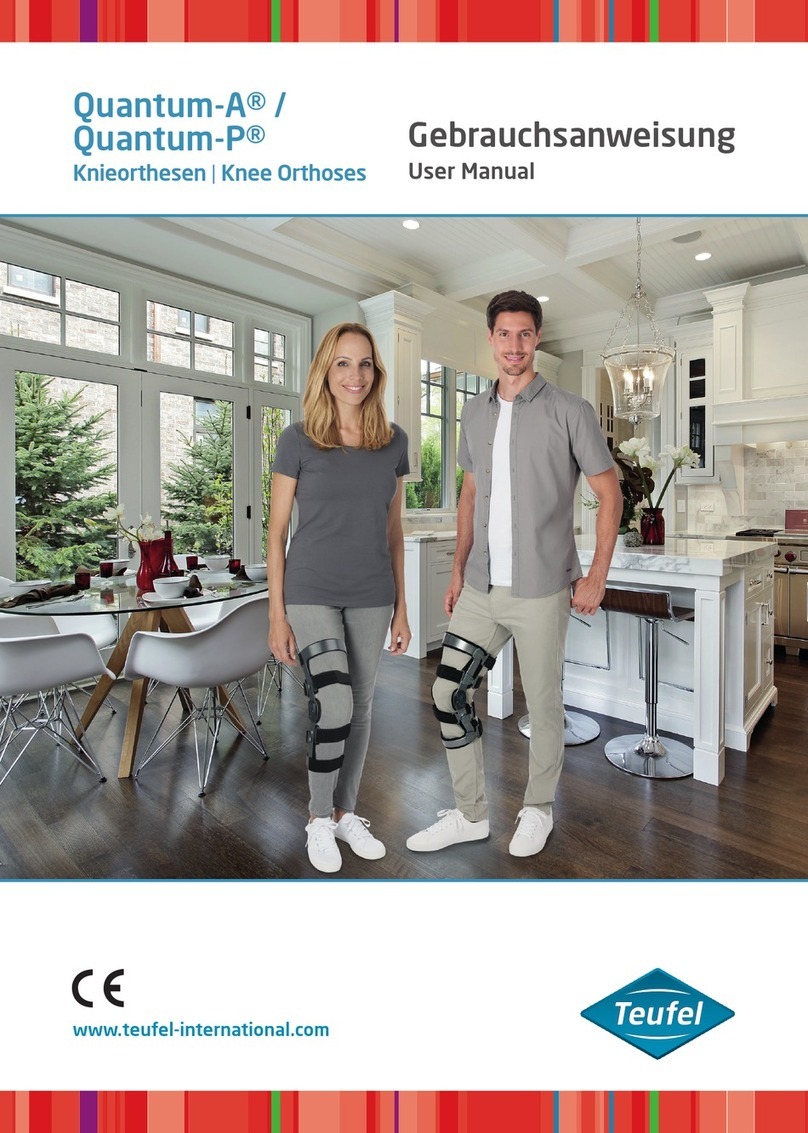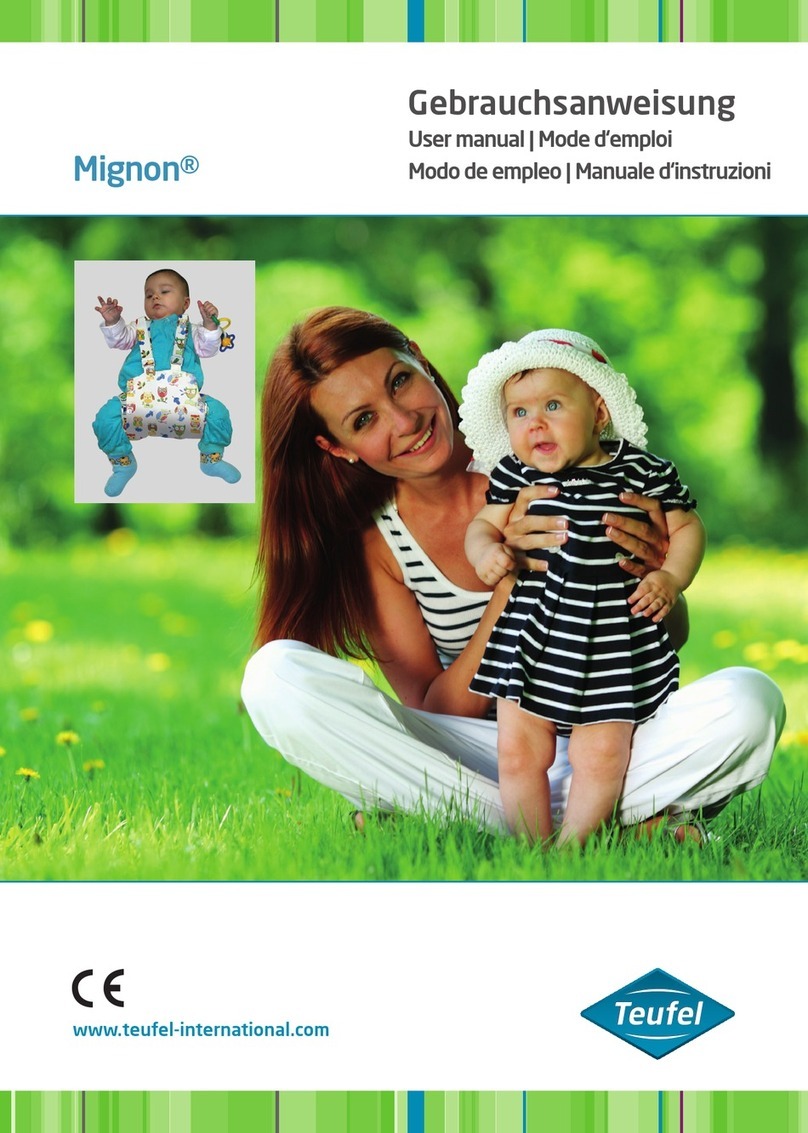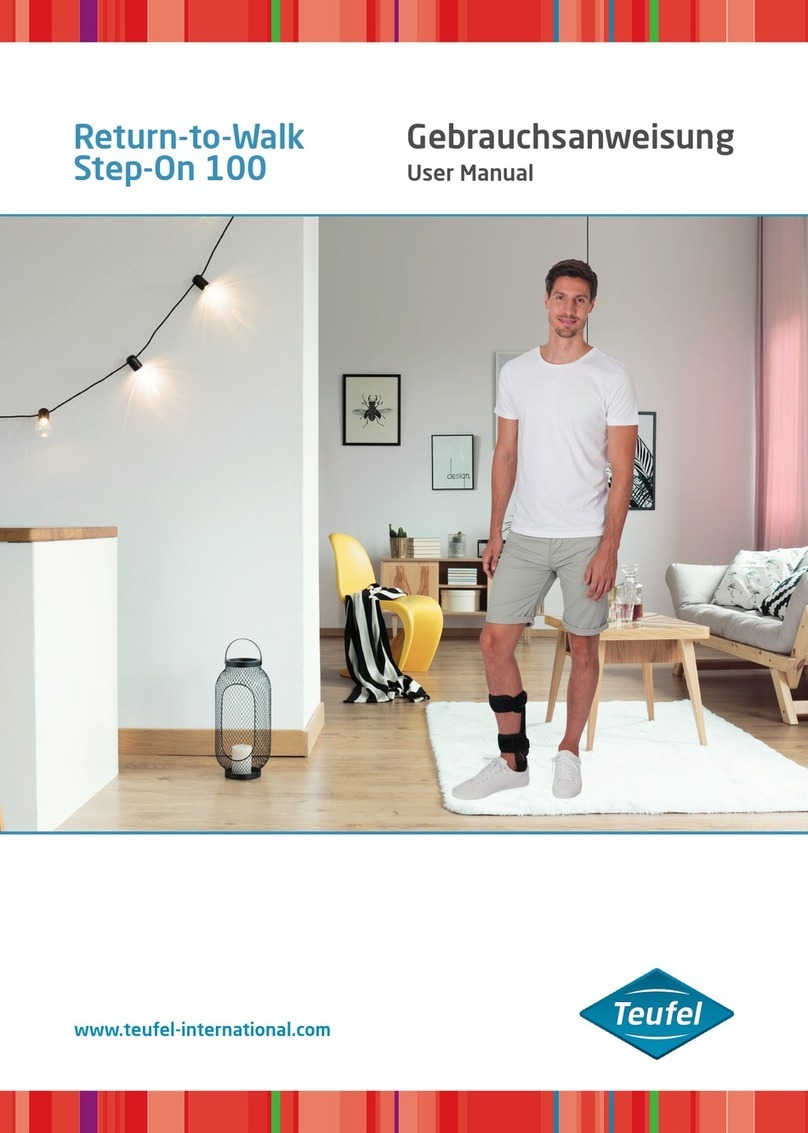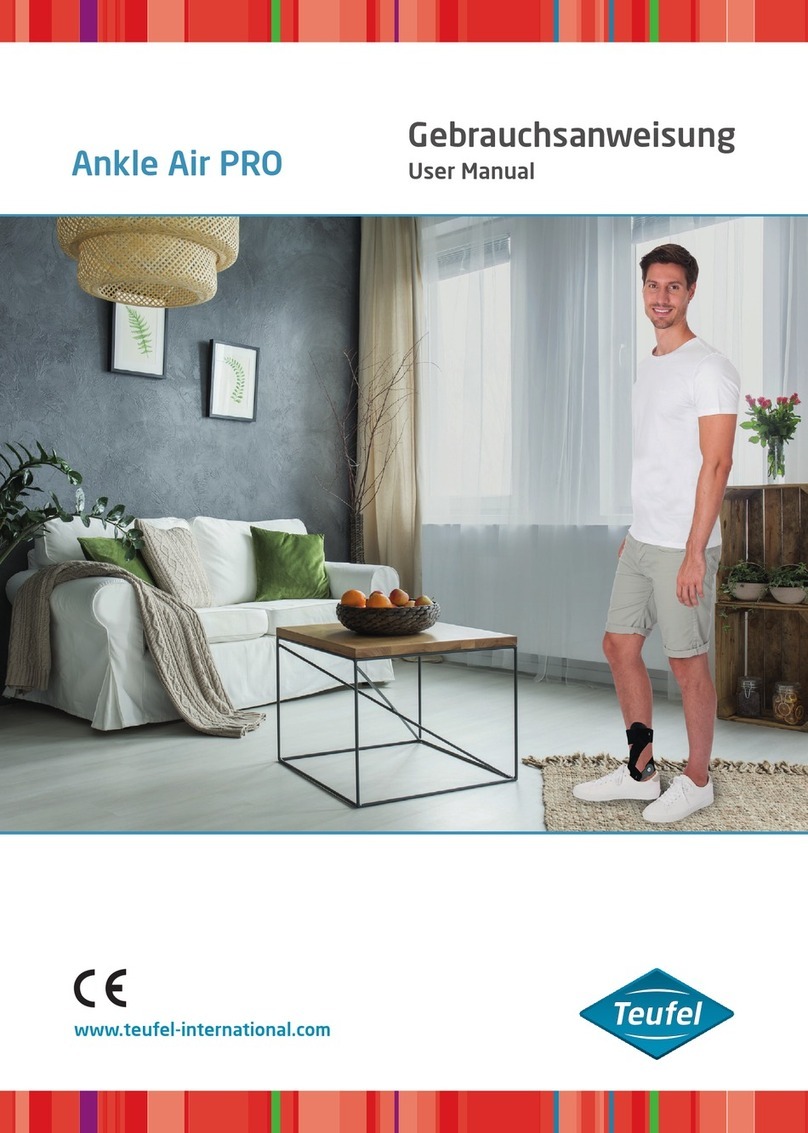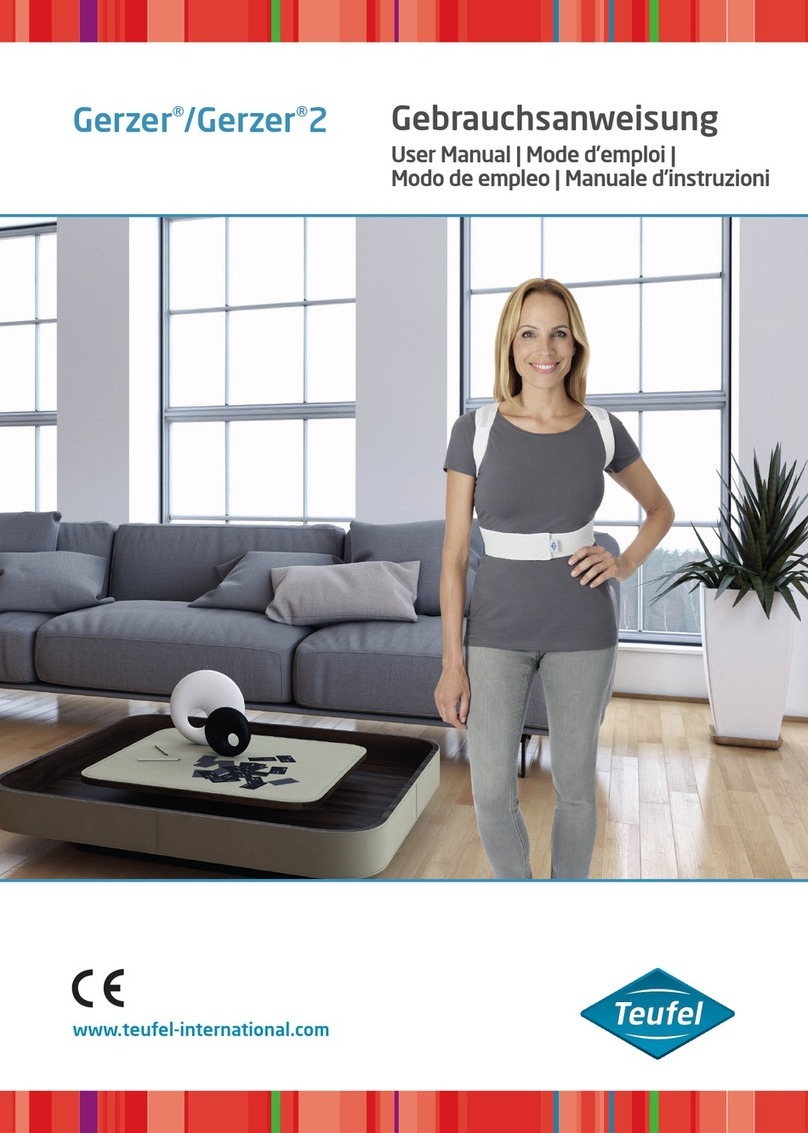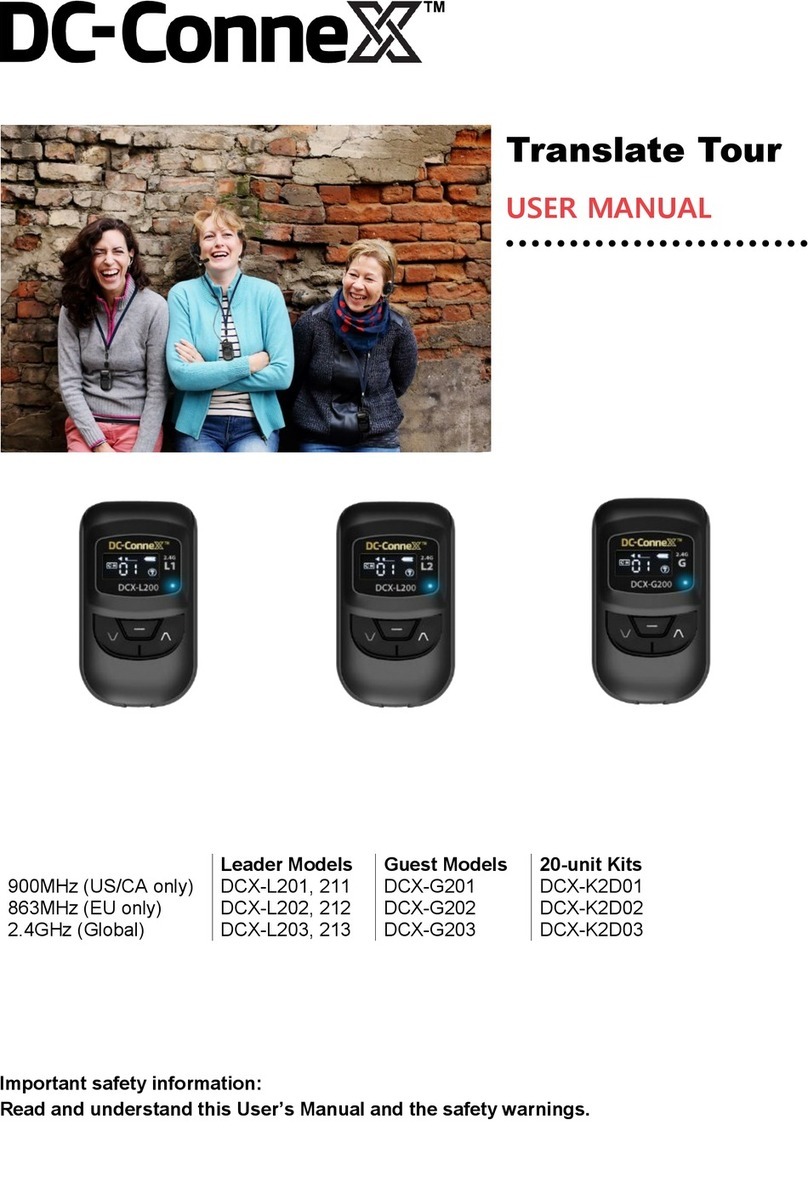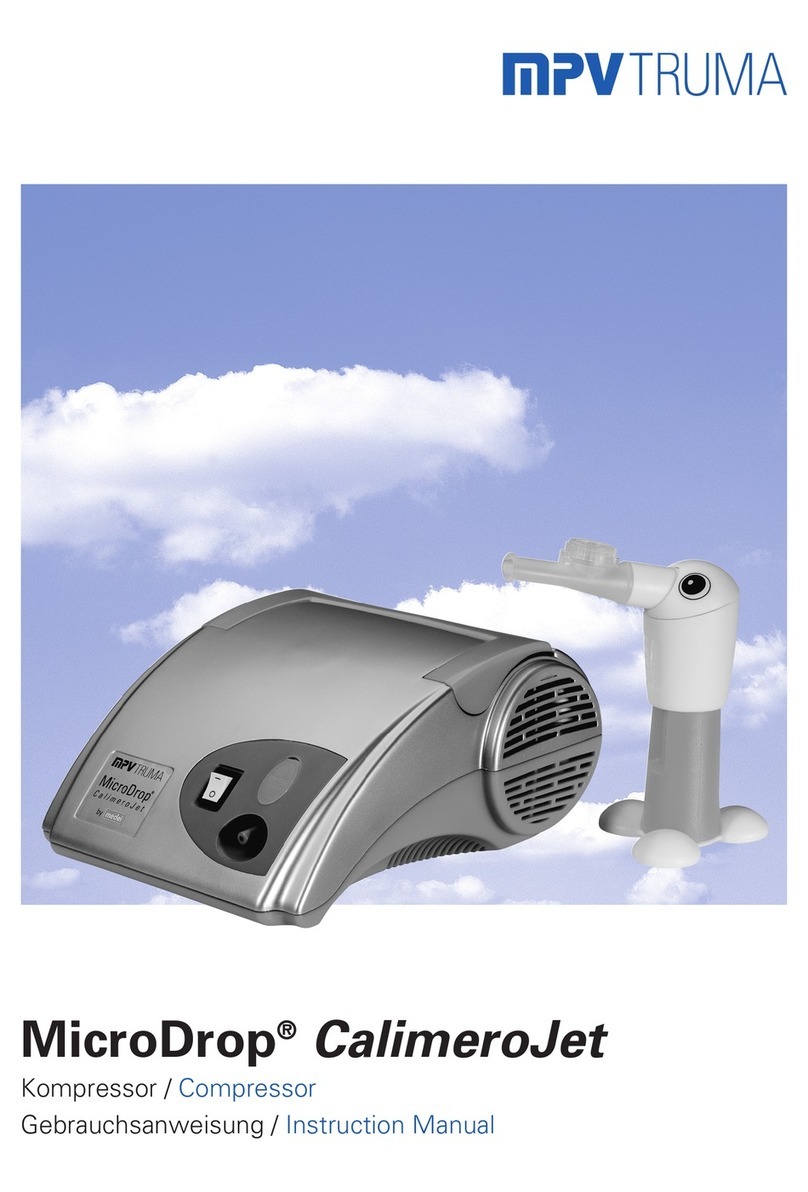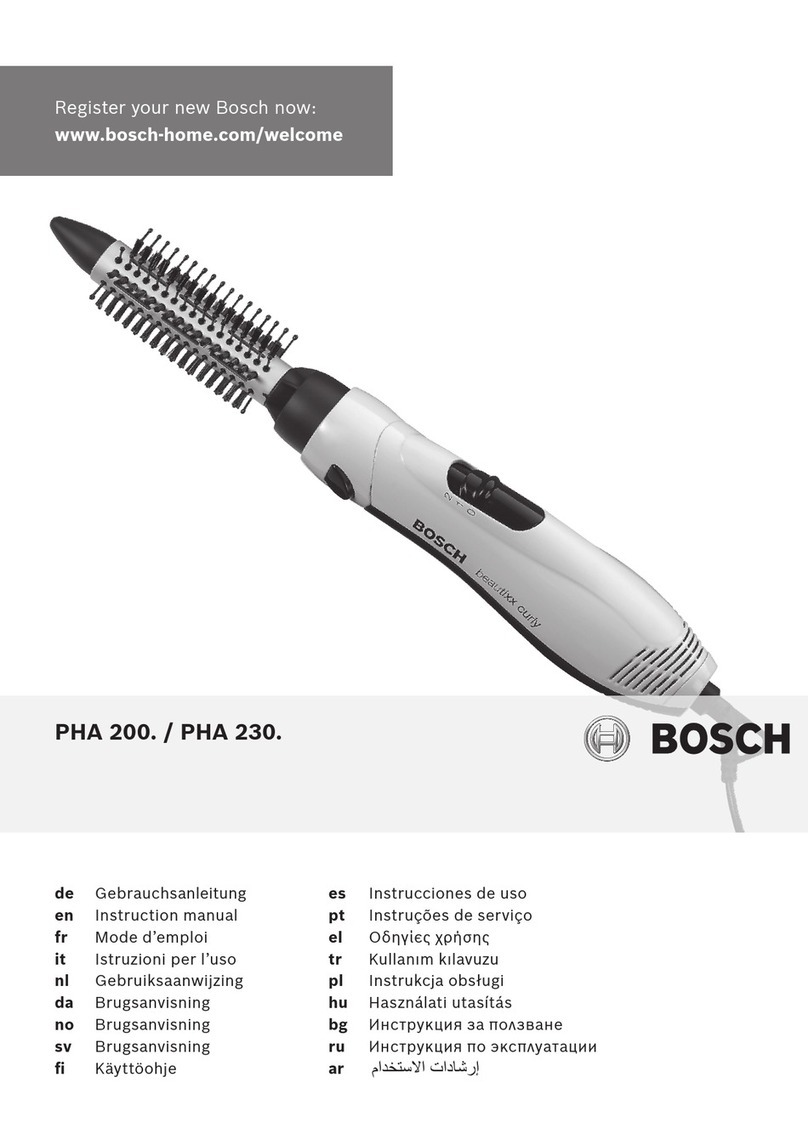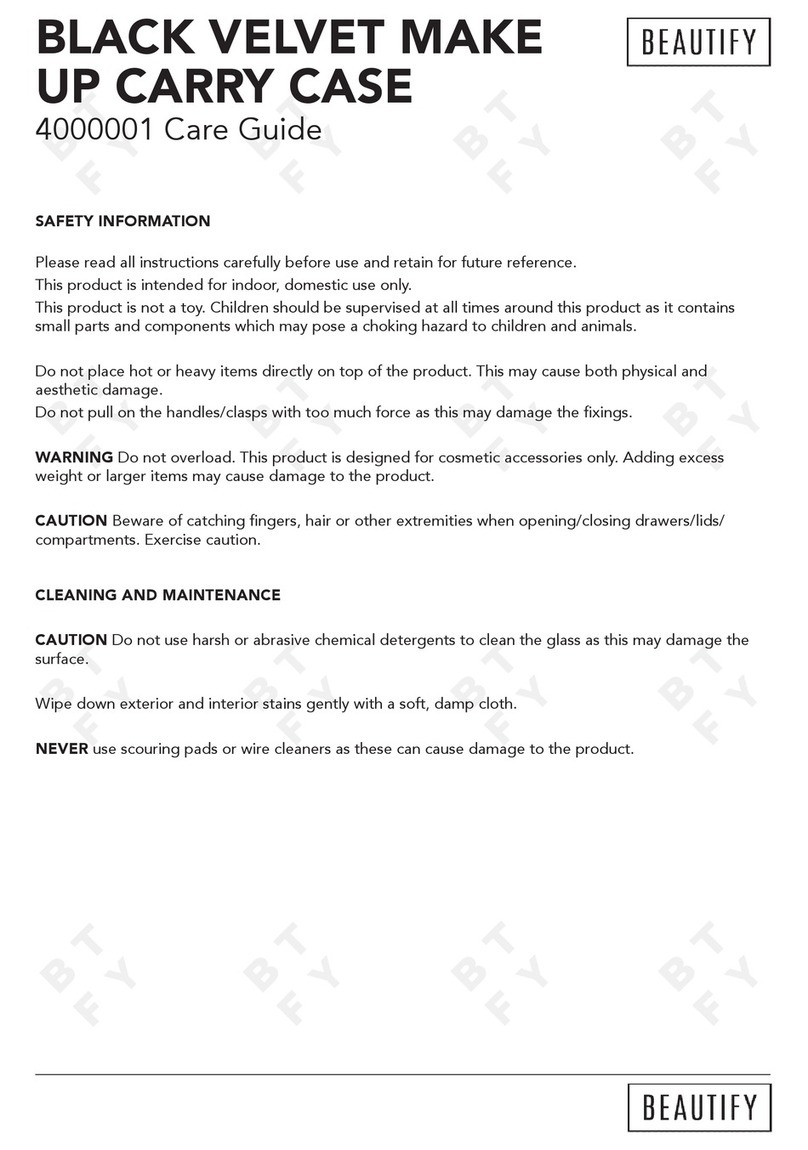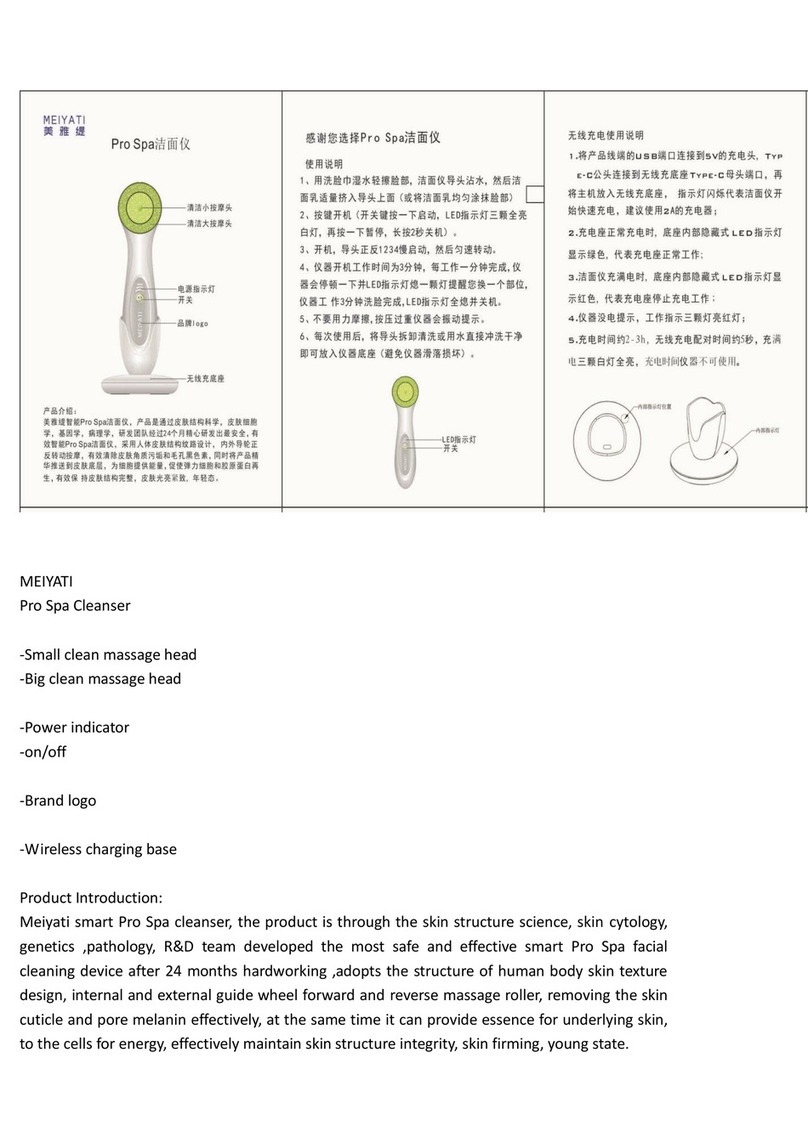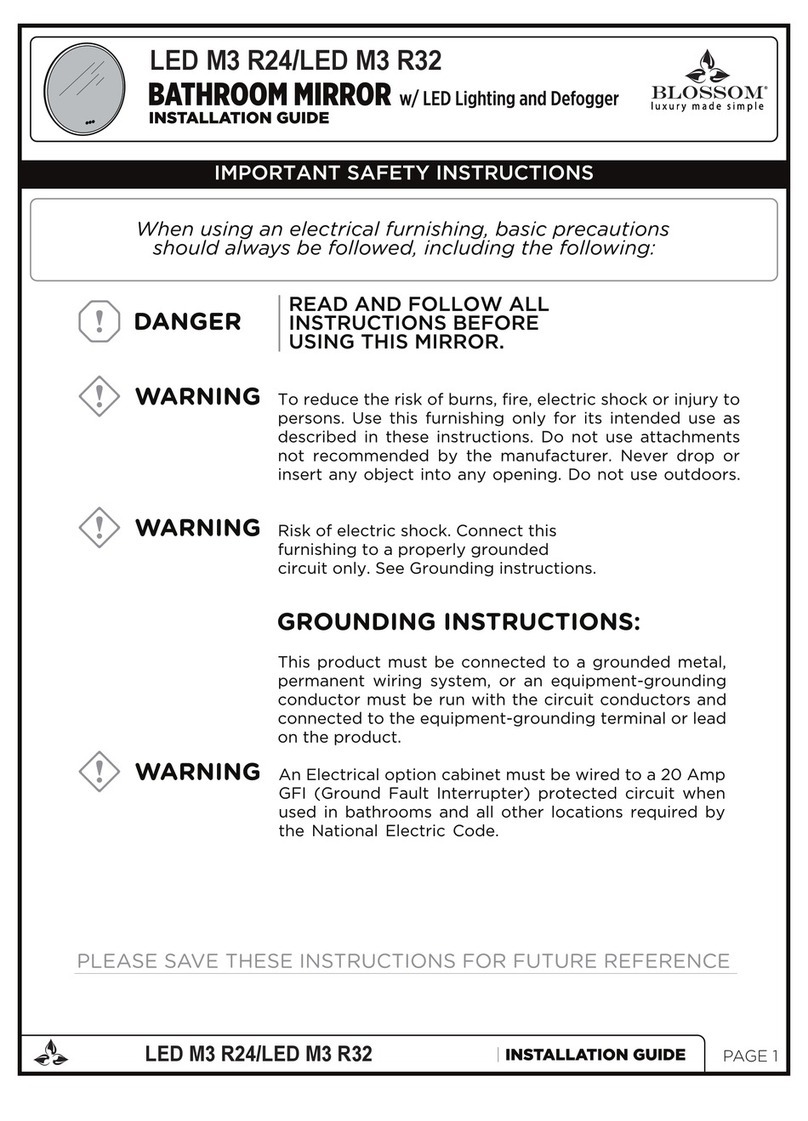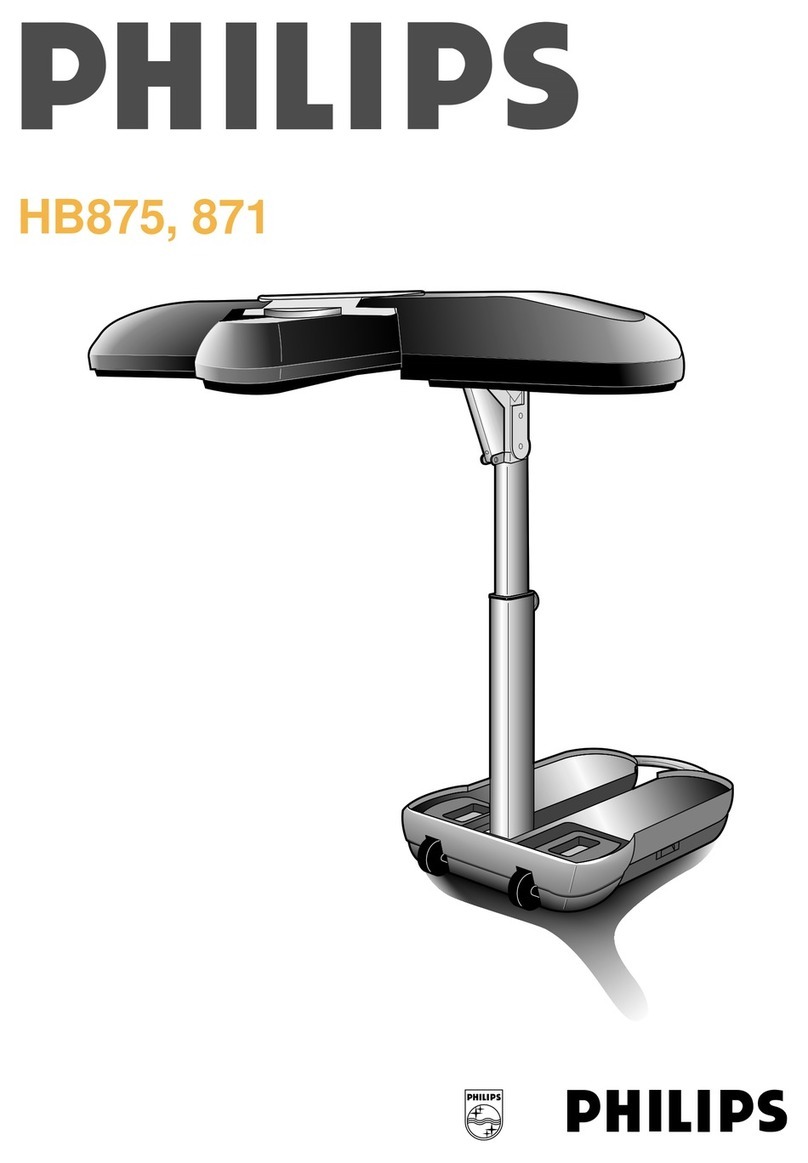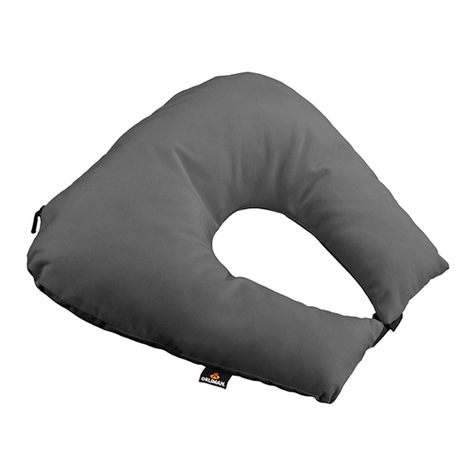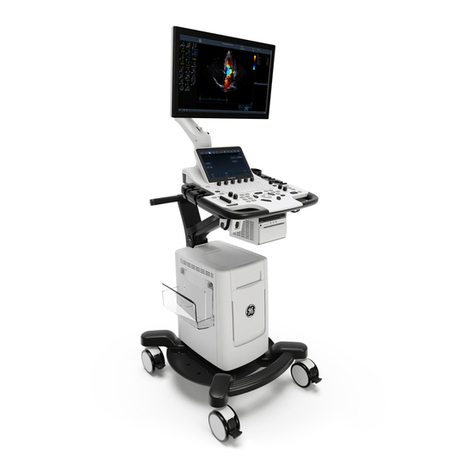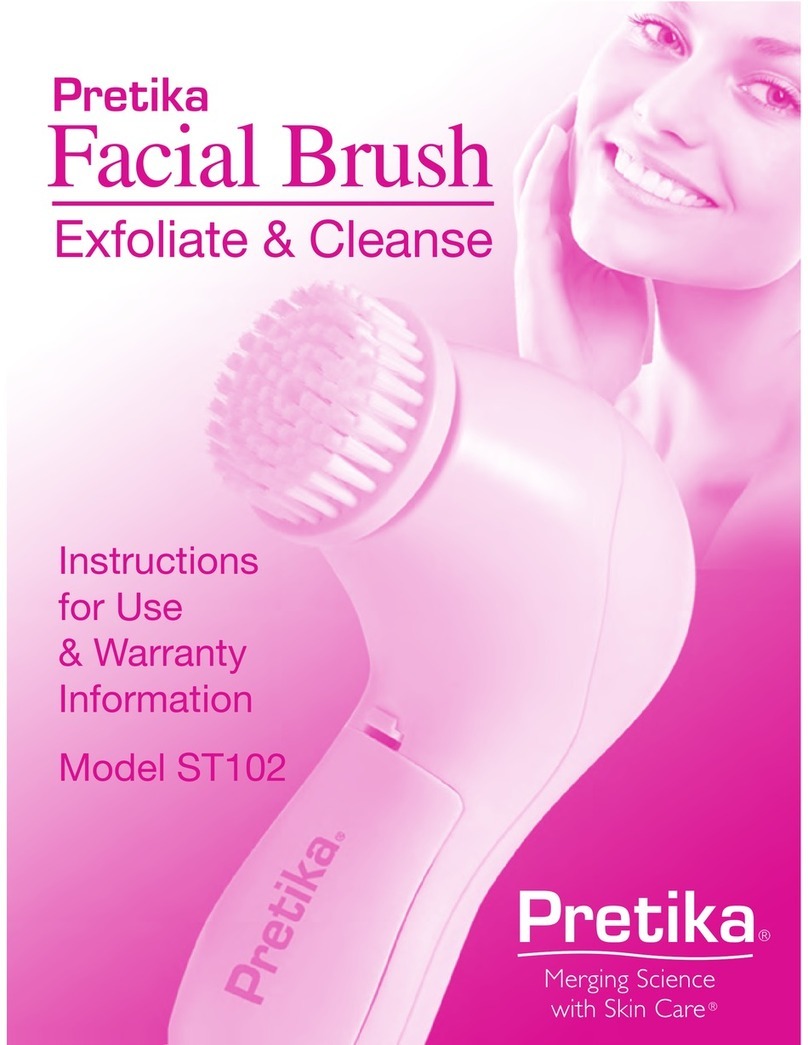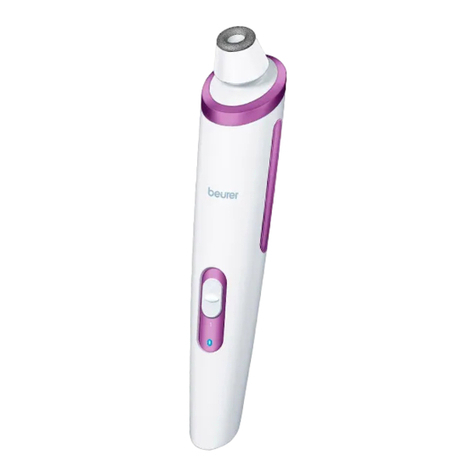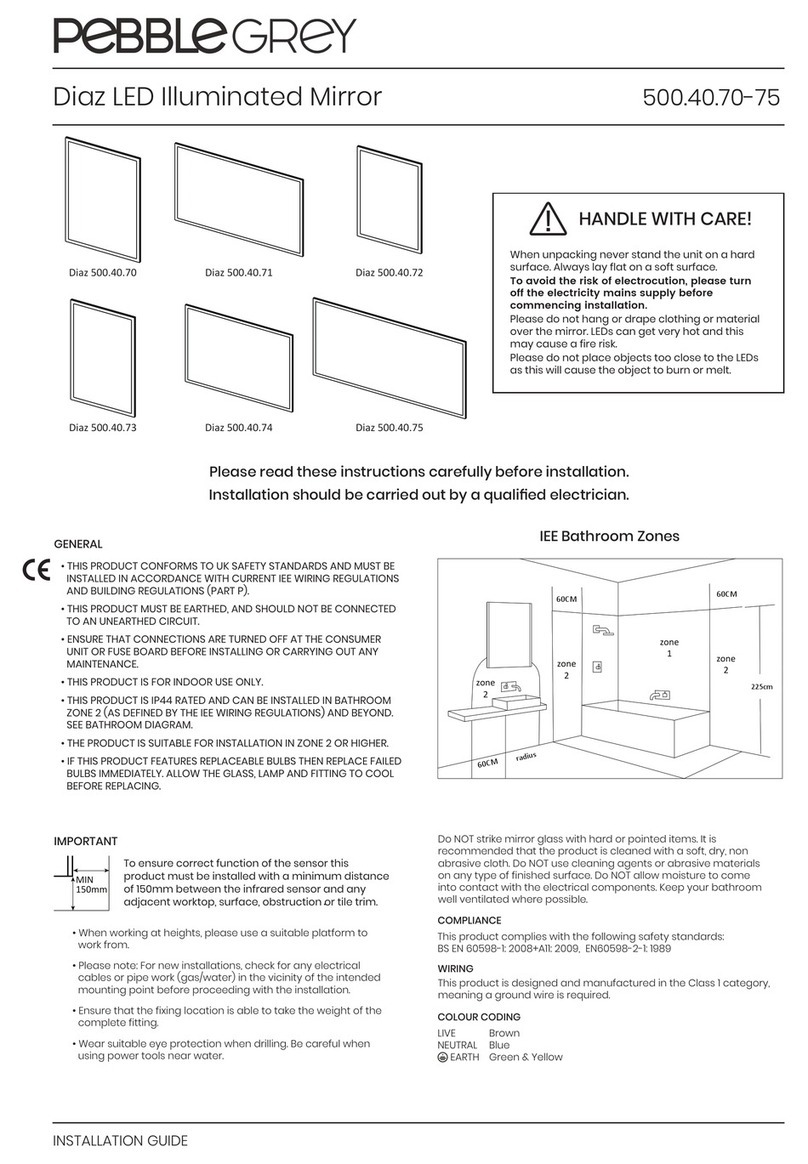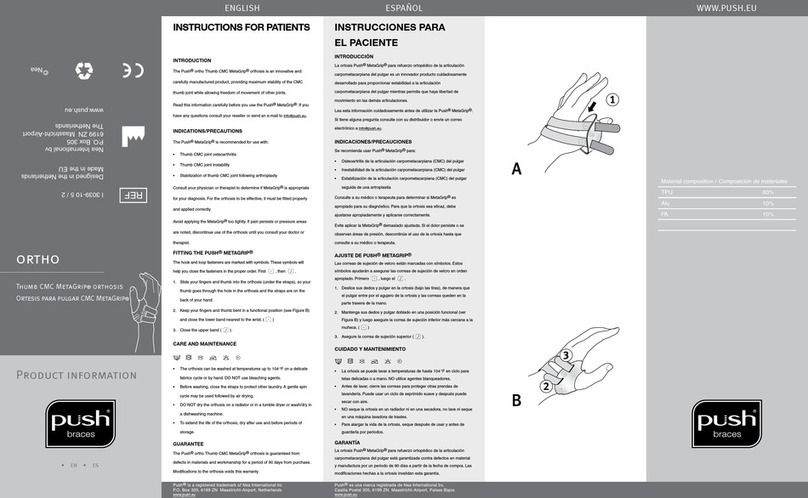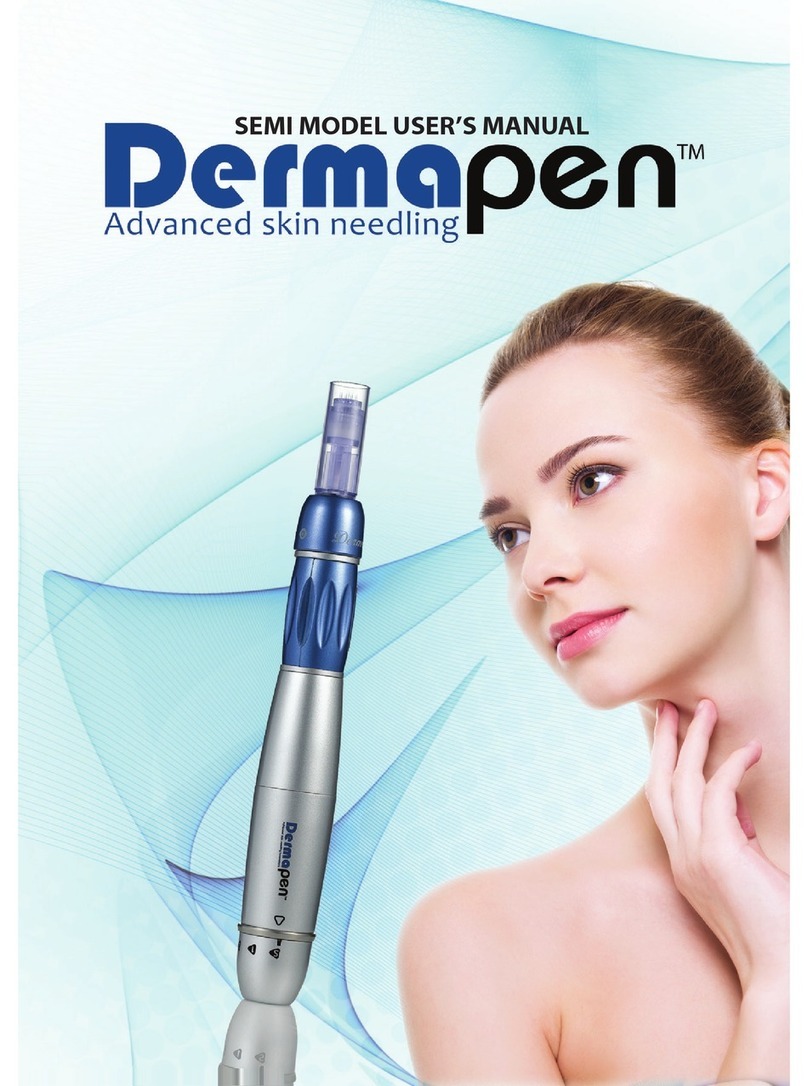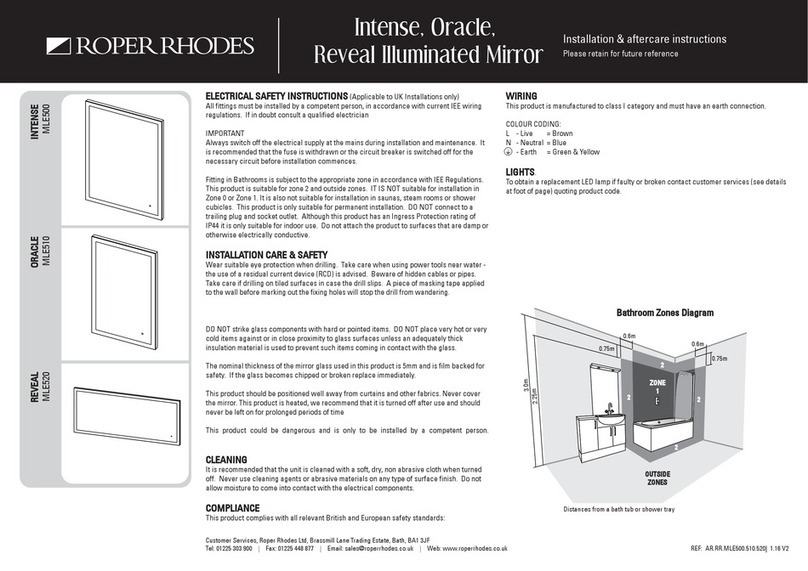
CoxaFlex® Gebrauchsanweisung
DE-2
DE
Bewusst freigegeben sind dagegen Ausweich-
bewegungen in die weitere Flexion und in die
Rotation. Die Beuge-Spreiz-Schiene CoxaFlex®
ermöglicht somit eine exakt dosierbare, zwang-
lose Zentrierung der unteren Extremitäten in
Flexion und Abduktion. Sie dient der Ruhigstel-
lung des Hüftkopfes bei instabiler oder dysplas-
tischer Hüftgelenksanlage (Hüftreifestörung)
unter möglichst medizinischen Bedingungen.
CoxaFlex®vermittelt die empfohlene Sitz-Hock-
Stellung des Fötus, Neugeborenen und Säuglings
und entspricht auch der naturgemäßen Kauerhal-
tung des Kindes am Körper der Mutter.
Bei sachgemäßer Anwendung sind uner-
wünschte Nebenwirkungen während über
25-jähriger Anwendung nicht bekannt geworden.
Die Beuge-Spreiz-Schiene CoxaFlex®ist
nicht zur Einrenkung einer Luxation, sondern
lediglich zur Zentrierung und Stabilisierung
der Hüftgelenke in physiologischer Stellung
geeignet. Es muss somit beim Anlegen der
Orthese darauf geachtet werden, dass sich
die Hüftgelenke in reponierter (eingerenkter)
Stellung befinden. Die CoxaFlex®verhindert
dann zuverlässig eine erneute Luxation.
Bei reiner Dysplasie (nicht bei Luxationsge-
fahr) kann die Orthese tagsüber für kürzere
Zeit abgelegt werden (zum Beispiel für die
Körperpflege), jedoch nur nach ausdrücklicher
Erlaubnis durch den behandelnden Arzt. Für
den Windelwechsel, wenn die Orthese über
einem zu önenden Strampler getragen wird,
braucht man sie nicht abzulegen. Die Spreiz-
schiene ist auf der Bauchseite ausgekehlt,
sodass die Windel hier problemlos durchge-
führt werden kann.
Beschreibung
Die weiterentwickelte Beuge-Spreiz-Schiene
CoxaFlex®basiert auf einem in mehr als
25Jahren bewährten Versorgungskonzept
(Gekeler, 1986). Sie besteht aus einem
einstellbaren Gurtsystem, einer stufenlos
einstellbaren Spreizschiene und dazugehö-
rigen Beinauflageschalen. Damit zentriert
CoxaFlex®die Hüftgelenke in natürlicher
Flexionsstellung (Beugestellung) von 90°
bis 100° und Abduktionsstellung (Abspreiz-
stellung) von 45° bis 50° (Abb.A/B). Diese
Position der Oberschenkel verhindert zuver-
lässig jede luxations- und dysplasiefördernde
Streck- und Adduktionsbewegung im Hüft-
gelenk. Auch das Auseinanderfallen der Ober-
schenkel in die unnatürliche und schädliche
sogenannte Froschstellung (Lorenz-Stellung
oder „frog-position“) ist unterbunden.
Inhalt
Beschreibung DE-2
Indikation DE-3
Kontraindikation DE-3
Funktion DE-3
Abrechnungsposition DE-3
Medizinprodukt DE-3
Sicherheit DE-3
Vorgesehener Einsatzbereich DE-4
REF/Größen DE-5
Lieferumfang DE-5
Maße nehmen DE-6
Anwendung/Anpassung DE-6
Komfort/Hygiene DE-8
Material DE-8
Produktpflege/Reinigung/Wartung DE-8
Lagerung/Entsorgung DE-8
Zeichenerklärung DE-8
